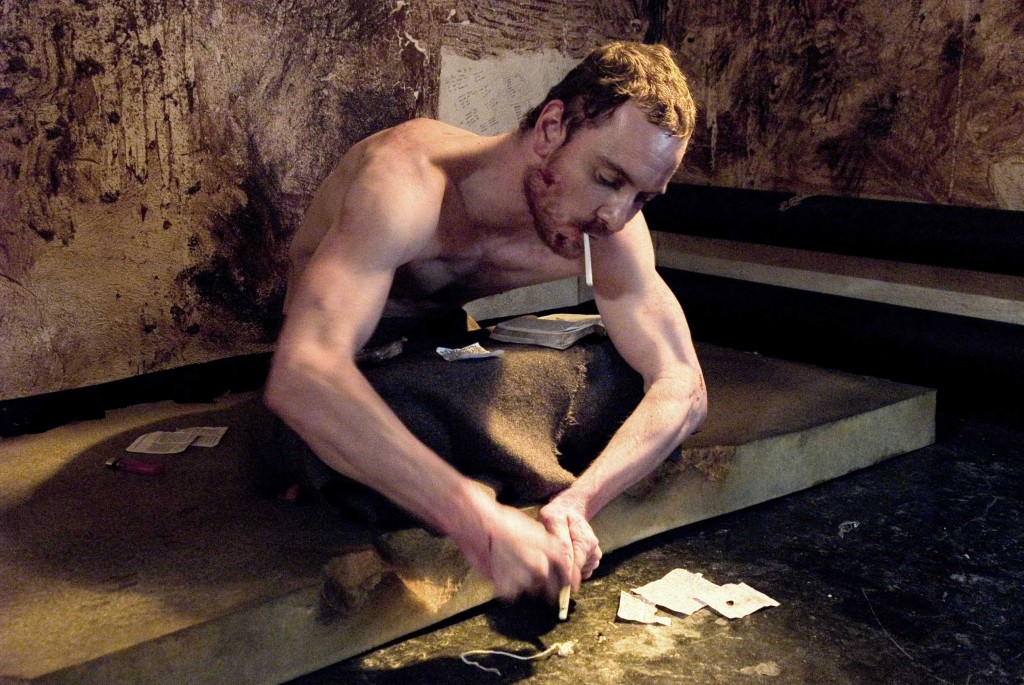



Michael Fassbender embodies, actually disembodies, Bobby Sands.

Steve McQueen chooses to portray, in a very sober and blunt way, the final months of Bobby Sands, the Irish Republican Army activist who protested his treatment at the hands of British prison guards with a hunger strike.

The film, produced in 2008, arrives in theatres after the recent success of ‘Shame’, binding the blessed collaboration between director and lead actor. This latter, besides being adored by the ladies for his sex appeal, demonstrates once again his incredible acting skills through every pore of his body. The eclectic Fassbender passes from one role to the other with skill of transformation, accent included. In ‘Inglorius Basterds’ he’s the unwillingly clumsy Lt. Archie Hicox, in ‘Jane Eyre’ he’s the introvert and aloof Rochester and in ‘A Dangerous Method’ he’s the Carl Jung who tries until the very end to stick to ethos despite the attraction he feels for his patient. But it is with Steve McQueen that Michael gives his very best. Yes in ‘Shame’ we did see him as a macho, busily engaged with sex throughout the entire film. But this is not what makes him and the movie so powerful: the sex addiction portrays the social isolation, the disturbing sense of emotional inadequateness, the raging cry to establish one’s position in the world. What conquers the audience is the uninhibition of feeling projected by the actor, rather than the exposure of his body. In the case of ‘Hunger’, the effectiveness seems to occur for the opposite reason. Fassbender’s figure is what stirs distraught: Michael has undergone a starvation diet to resemble the fasting Bobby Sands. Needless to reinforce that once again he has le physique du rôle.


Steve McQueen besides being a film-maker has started out as an artist. His minimalist style enhances his storytelling, both in the visual arts and in the cinematographic realm. 1999’s Turner Prize winner has always demonstrated to be a champion of the oppressed: in 2006 he went to Iraq as an official war artist and the following year he produced ‘Queen and Country’, as a commemoration of the deaths of British soldiers, presenting their portraits as a sheet of stamps. ‘Hunger’ is McQueen’s first feature and shows the movement of IRA and what occurred in 1981 in The Maze prison in Northern Ireland. The Blanket Protest and the No-Wash/Dirty Protest, led to the hunger strike of the political prisoners demanding political status to Margaret Thatcher’s government. The H-block re-lives through the director’s crude and equitable report, just as through Fassbender’s anorexic-disappearing body.


The movie won the Caméra d’Or in Cannes, the Gucci Award in Venice, the Discovery Award in Toronto and the Carl Foreman Award in BAFTA. But what sums up best the X factor of ‘Hunger’ is the explanation given to the award given at the Sydney Film Festival, “for it’s controlled clarity of vision, its extraordinary detail and bravery, the dedication of its cast and the power and resonance of its humanity”.


by Chiara Spagnoli